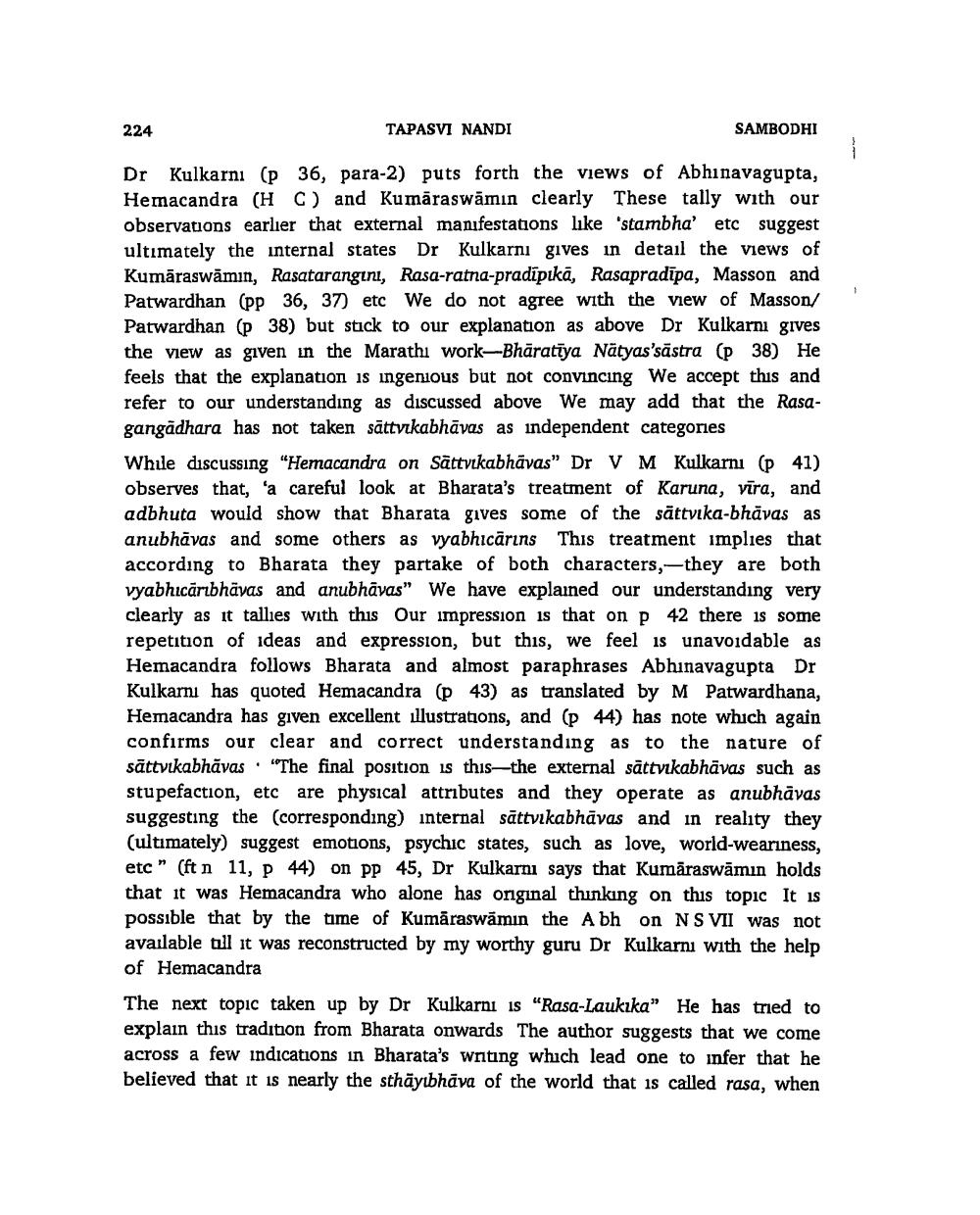________________
224
TAPASVI NANDI
SAMBODHI
Dr Kulkarni (p 36, para-2) puts forth the views of Abhinavagupta, Hemacandra (
H C) and Kumāraswāmin clearly These tally with our observations earlier that external manifestations like 'stambha' etc suggest ultimately the internal states Dr Kulkarnı gives in detail the views of Kumāraswāmin, Rasatarangini, Rasa-ratna-pradīpikā, Rasapradīpa, Masson and Patwardhan (pp 36, 37) etc We do not agree with the view of Masson/ Patwardhan ( 38) but stick to our explanation as above Dr Kulkarnı gives the view as given in the Marathi work-Bhāratīya Nātyas'sāstra (
p38) He feels that the explanation is ingenious but not convincing We accept this and refer to our understanding as discussed above We may add that the Rasagangadhara has not taken sättvikabhāvas as independent categories Whưe discussing "Hemacandra on Sättvikabhāvas" Dr V M Kulkarni (
p41) observes that, 'a careful look at Bharata's treatment of Karuna, vīra, and adbhuta would show that Bharata gives some of the sättvika-bhāvas as anubhāvas and some others as vyabhicārins This treatment implies that according to Bharata they partake of both characters,—they are both vyabhıcārıbhāvas and anubhāvas" We have explained our understanding very clearly as it tallies with this Our impression is that on P 42 there is some repetition of ideas and expression, but this, we feel is unavoidable as Hemacandra follows Bharata and almost paraphrases Abhinavagupta Dr Kulkarni has quoted Hemacandra (p 43) as translated by M Patwardhana, Hemacandra has given excellent illustrations, and (p 44) has note which again confirms our clear and correct understanding as to the nature of sāttvikabhāvas "The final position is this—the external sättvikabhāvas such as stupefaction, etc are physical attributes and they operate as anubhāvas suggesting the corresponding) internal sāttvikabhāvas and in reality they (ultimately) suggest emotions, psychic states, such as love, world-weariness, etc” (ft n 11, p 44) on pp 45, Dr Kulkarni says that Kumāraswāmın holds that it was Hemacandra who alone has original thinking on this topic It is possible that by the time of Kumāraswāmin the A bh on NS VII was not available tull it was reconstructed by my worthy guru Dr Kulkarni with the help of Hemacandra The next topic taken up by Dr Kulkarni is “Rasa-Laukika" He has tried to explain this tradition from Bharata onwards The author suggests that we come across a few indications in Bharata's wnting which lead one to infer that he believed that it is nearly the sthāyıbhāva of the world that is called rasa, when




